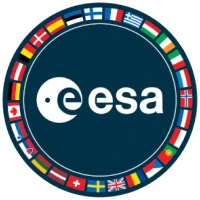Herschel & Planck
Launch Success
Liftoff Time (GMT)
13:12:00
Thursday May 14, 2009
Mission Details
Read Article
Launch Notes
Flight V188.
Herschel Space Observatory
The Herschel Space Observatory was a space observatory built and operated by the European Space Agency (ESA). It was active from 2009 to 2013 and was the largest infrared telescope ever launched, carrying a 3.5-metre (11.5 ft) mirror and instruments sensitive to the far infrared and submillimetre wavebands (55–672 µm). Herschel was the fourth and final cornerstone mission in the Horizon 2000 programme, following SOHO/Cluster II, XMM-Newton and Rosetta. NASA is a partner in the Herschel mission, with US participants contributing to the mission; providing mission-enabling instrument technology, and sponsoring the NASA Herschel Science Center (NHSC) at the Infrared Processing and Analysis Center and the Herschel Data Search at the Infrared Science Archive.
Sun–Earth L2
1 Payload
3,400 kilograms
Planck
Planck was a space observatory operated by the European Space Agency (ESA) from 2009 to 2013, which mapped the anisotropies of the cosmic microwave background (CMB) at microwave and infrared frequencies, with high sensitivity and small angular resolution. The mission substantially improved upon observations made by the NASA Wilkinson Microwave Anisotropy Probe (WMAP). Planck provided a major source of information relevant to several cosmological and astrophysical issues, such as testing theories of the early Universe and the origin of cosmic structure. Since the end of its mission, Planck has defined the most precise measurements of several key cosmological parameters, including the average density of ordinary matter and dark matter in the Universe and the age of the universe.
Sun–Earth L2
1 Payload
1,950 kilograms
Rocket


Manufacturer
ESAPrice
$200.00 million
Rocket
Diameter: 5.4m
Height: 53m
Payload to Orbit
LEO: 21,000 kg
GTO: 10,500 kg
Liftoff Thrust
15,120 Kilonewtons
Fairing
Diameter: 5.4m
Height: 17m
Stages
2
Strap-ons
2
Launch Site
Stats
Ariane 5
44th
Mission
2nd
Mission of 2009
European Space Agency
176th
Mission
2nd
Mission of 2009
2009
28th
Orbital launch attempt